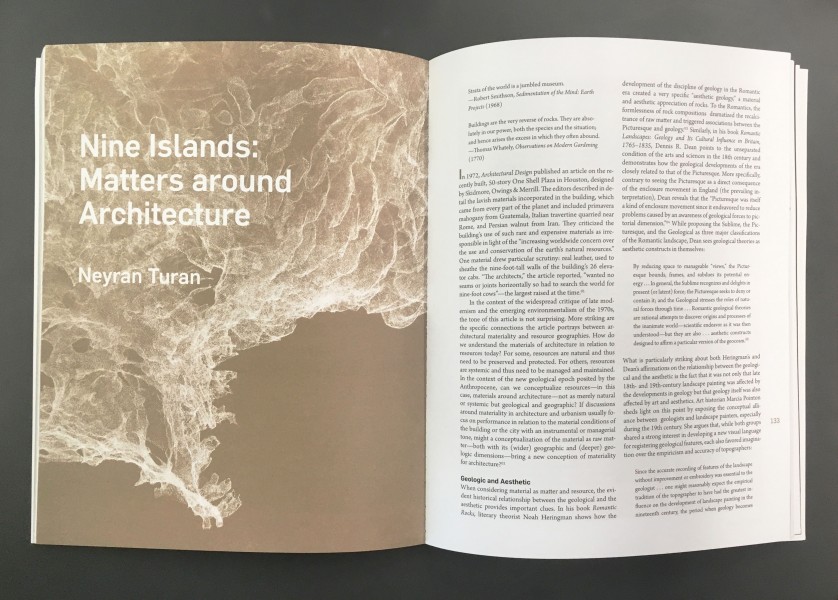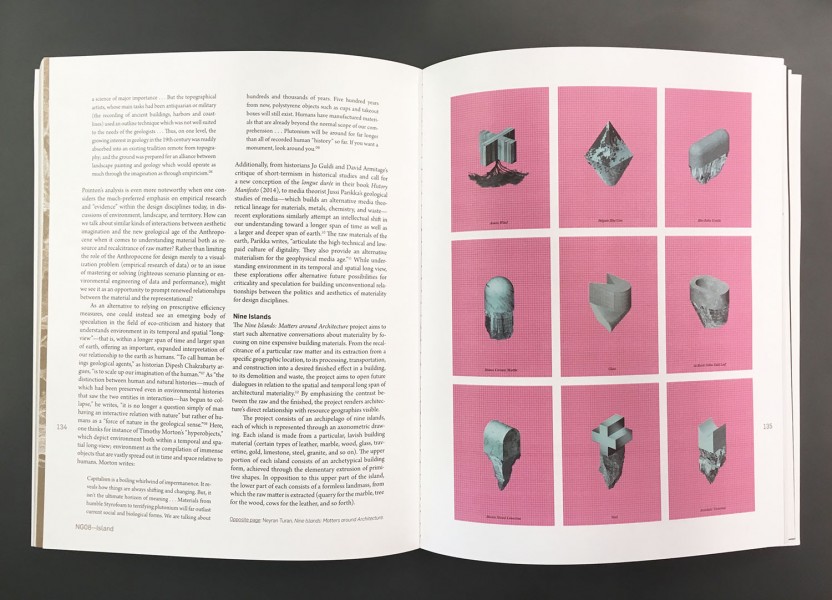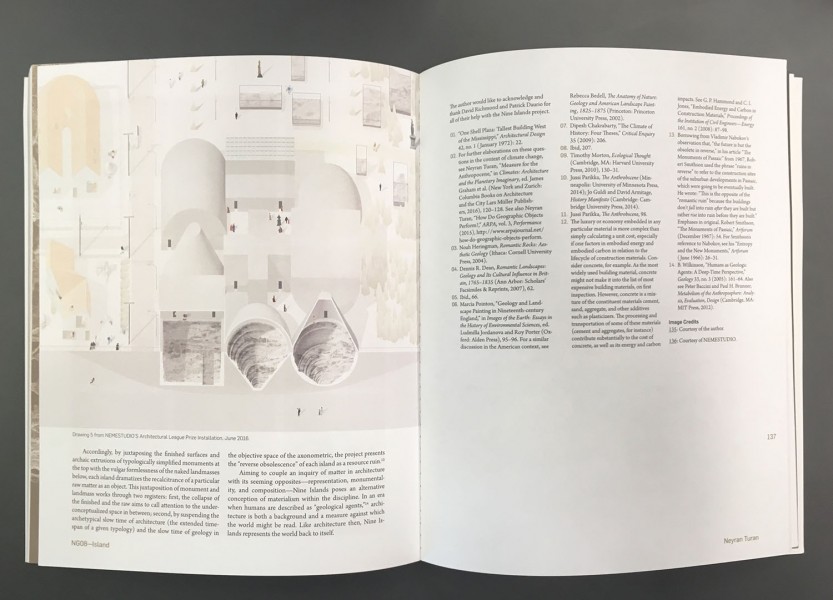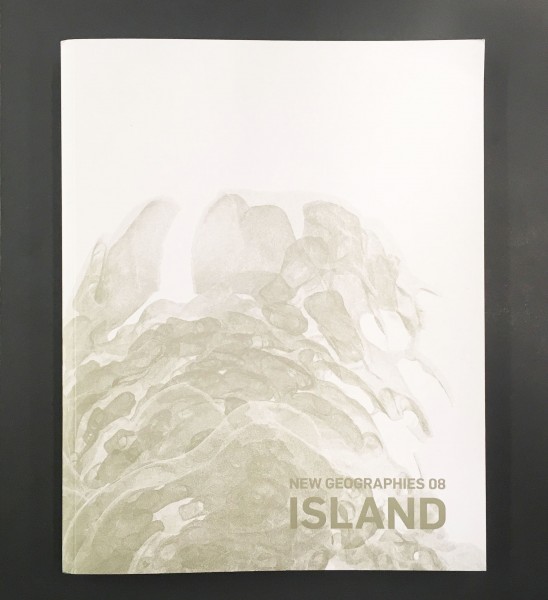How do we understand materials of architecture in relation to resources today? For some, resources are natural and thus need to be preserved and protected. For others, resources are systemic, and thus need to be managed and maintained. In the context of the new geological epoch posited by the Anthropocene, can we conceptualize resource, in this case materials around architecture, not as merely natural or systemic but geological and geographic?
In his book, Romantic Landscapes: Geology and Its Cultural Influence in Britain 1765–1835, historian Dennis R. Dean points out to the unseparated condition of arts and sciences in the 18th century and shows us how the development of Picturesque was closely related to the geological developments of the era. More specifically, rather than seeing Picturesque as a direct consequence of the enclosure movement in England—which, according to Dean, has been the usual interpretation of the development of Picturesque—he shows that the “Picturesque was itself a kind of enclosure movement since it endeavored to reduce problems caused by an awareness of geological forces to pictorial dimension." Dean writes: "Romantic geological theories are rational attempts to discover origins and processes of the inanimate world…but they are also, … aesthetic constructs designed to affirm a particular version of the geocosm."
What is particularly striking about Dean’s affirmations in relation to the relationship between the geological and the aesthetic is the fact that it was not only that the late 18th and 19th nineteenth century landscape painting was affected by the developments in geology but that geology itself was also affected by art and aesthetics. How can we talk about similar kinds of interactions between aesthetic imagination and the new geological age of the Anthropocene when it comes to understanding material both as resource and recalcitrance of raw matter? Rather than limiting the role of the Anthropocene for design merely to a visualization problem (empirical research of data) or an issue to master or solve (righteous scenario planning or environmental engineering of data and performance), might we see it as an opportunity to prompt renewed relationships between the material and the representational?



